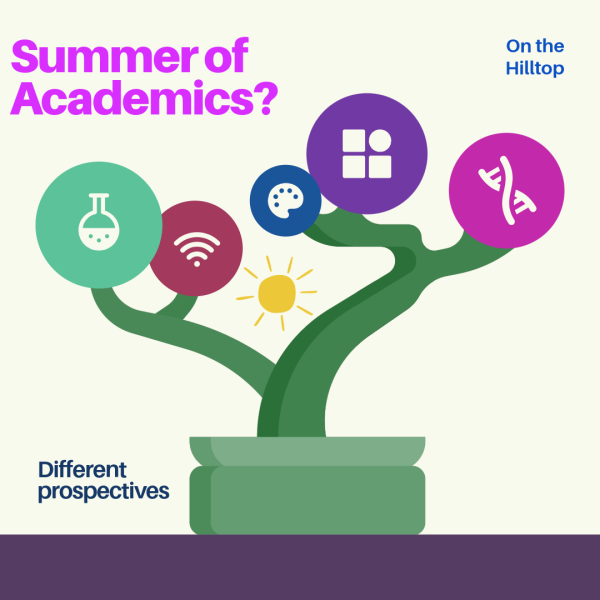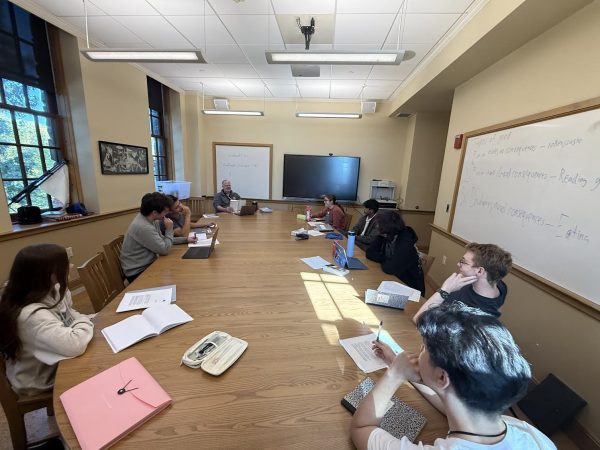Orchard and Apiary
Students and faculty work to create and nurture the new orchard and home for bees
Tessa Johnson, Upper School science teacher, helped lead the establishment of the orchard and apiary on campus. The creation of the orchard has been in the works for a long time, following a recent increase of suburban schools implementing them. She discusses the faculty and student involvement as well as current and future plans for the orchard and apiary.
The faculty involvement with the orchard has been tremendous. Regina DiStefano, Lower School Garden, and Nutrition Coordinator started the process with the apiary and sent out a video regarding this in the Hackley communications last year. Instead of receiving a 20-year gift from Hackley, Ms. Crainer decided to give trees for the orchard.
Student involvement in 2020 also helped the progression of the orchard. “(We) want students to build the orchard even though B+G (Building and Grounds) could have easily done (it)” Ms. Johnson said. Students helped set the soil, clear out the area, and spread mulch. They also assisted in building a grapevine pergola and painting a table so there can be a designated student area. Students in each of the three divisions on campus will paint bee boxes.
Last year, two seniors Daniel Riveria and Olivia Rowbottom worked on the orchard for their senior project with Covid-19 restrictions making their original plans fall through. Current senior and class president, Daniel Cai, also worked on the orchard in his junior year for the Advanced Forest Ecology Research class (AFER.)
Hackley ordered eleven species of trees for the orchard this school year. One is the 4-in-1 Apple Tree which provides four varieties of apples like Gala, Fuji, Golden Delicious, and Red Delicious. Another tree ordered is the Red Gravenstein Apple Tree which produces fruit in late July and August so Hudson Scholars can pick apples on campus. The Newtown Pippin Apple Tree is famous for its colonial American apple because it was cultivated by George Washington and Thomas Jefferson.
Also added is the Honeycrisp Apple Tree which has become incredibly popular in grocery stores. Another one of the classics is the Cortland Apple Tree which is a favorite among cooks and orchardists mainly used in pies, bread, and applesauce. The Ashmead’s Kernel Tree originated from a seed planter Dr. Thomas Ashmead and is great for cider. The King David Apple Tree is quite versatile with its use for cider, pies, sauce, and eating.
Another is The Snow Fameuse Apple Tree which creates one of the oldest and most desired dessert apples. The Spitzenburg Apple Tree has a historical background; it was discovered in the late 1700s by an early Dutch settler and was given much attention when Thomas Jefferson ordered a dozen trees for his orchard in Monticello. The Pink Pearl Apple Tree is great for baking, especially in tarts or sauces. Finally, the Seckel Pear Tree is naturally semi-dwarfing, making it great for an orchard or garden.
During the Fall Sting, Flik implemented apples from the orchard to make apple butter. Lower School classes were also involved in this process and helped stir the pot.
Ms. Johnson and some students also attended online webinars for more ideas regarding the orchard. Ms. Johnson was able to speak to Sam Van Aken who is able to make a tree with 40 different fruits. To check out more regarding his work here is his website.
Some future plans include installing a bat box to integrate pest management by encouraging bats to control insect infestation resulting in fewer chemicals being sprayed.
Overall, the orchard and apiary on campus have received lots of student involvement and the faculty is continuing to work on improving integrating it even more into campus.








